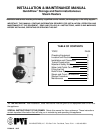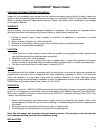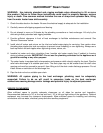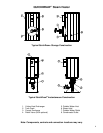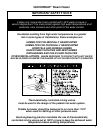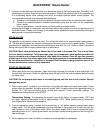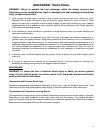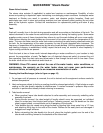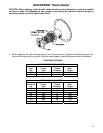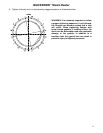
QUICKDRAW
®
Steam Heater
8
WARNING: Failure to operate the heat exchanger within the design pressure and
temperature on the nameplate may result in damage to the heat exchanger and potential
injury to adjacent personnel.
5. Open nearby hot water tap to maintain a flow of water through the tank when starting up units.
Regulate flow of water through the tank to allow the steam valve(s) to cycle off and on. Open
nearby hot water tap to maintain a flow of water through the tank when starting up units. Observe
condensate flow at the receiver or other collection sight to verify satisfactory flow. Check operation
of all safety and operating controls.
6. In all installations, there should be no pulsation or water hammer since this causes vibration and
strain with resulting leaks.
7. Retighten bolting on all gasketed joints after the heat exchanger has reached temperature to
prevent leaks and gasket failures. Retightening should be done uniformly and in a diametrically
staggered pattern (see “Maintenance”). On high pressure and high temperature applications or any
application where spiral wound gaskets are required, it is recommended that the gasketed joints of
the heat exchanger be retightened to the required torque (see “Maintenance”) after 24 hours at
operating pressures and temperatures to compensate for any relaxation or creep that may have
occurred.
8. In shutting down, remove all power from the system. Close all steam and cold water supply valves
to the unit.
9. If the unit is removed from service for an extended period, it must be drained to eliminate the
possibility of freezing and corrosion from stagnant water conditions.
MAINTENANCE
WARNING: To reduce the risk of electrical shock injury or death, on control systems
using 120 volt external power, be certain switch is off and power disconnected before
work is performed on this heater.
Temperature and Pressure Relief Valve
Operate the temperature and pressure relief valve at least once a year by lifting the lever briefly. If the
valve does not open and close properly when testing, it must be replaced with a like relief valve.
Thermostats and Temperature Limiting Device
The temperature limiting device and thermostat temperature sensors extend into the water in the tank.
Depending on the water conditions in your area, scale may coat the sensors. This coating will affect
accuracy of sensors and can allow water temperature to exceed the desired limits. Remove and inspect
these controls at necessary intervals. Remove scale if present.



